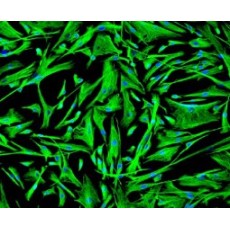New Customers Sepcial: Get 15% off, use the code "NEW15" at checkout. Shop Now!
Human Hepatic Stellate Cells (Normal and NASH)
Primary Human stellate cells (PHSCs) are specialized cells found in the liver that play a key role in liver function and pathology. They are involved in the storage of vitamin A and the regulation of extracellular matrix (ECM) components. In a healthy liver, stellate cells exist in a quiescent state, but they can become activated in response to liver injury, such as in conditions like fibrosis or cirrhosis. Upon activation, HSCs transform into myofibroblast-like cells, producing collagen and other ECM proteins, which contribute to scar tissue formation and liver fibrosis.
Primary HSC are isolated from human liver tissue and are widely used in research to study liver fibrosis, wound healing, and the cellular mechanisms involved in liver diseases. These cells are valuable in drug discovery, as they provide insights into the pathophysiology of liver diseases and can be used to test compounds aimed at preventing or reversing liver fibrosis. Additionally, HSCs are crucial in understanding liver regeneration and the role of cell-cell interactions in maintaining liver homeostasis.

| Biological | |
|---|---|
| Cell Type | Hepatocytes |
| Disease | Normal |
| Recommended Culture Condition | Stellate Cell Growth Medium Kit (Cat.# TDM-1011K) |
| Source Organ | Liver |
| Species | Human |
| Shipping and Handling | |
| Shipping Temperature | Dry ice |
| Storage Temperature | Liquid nitrogen |





